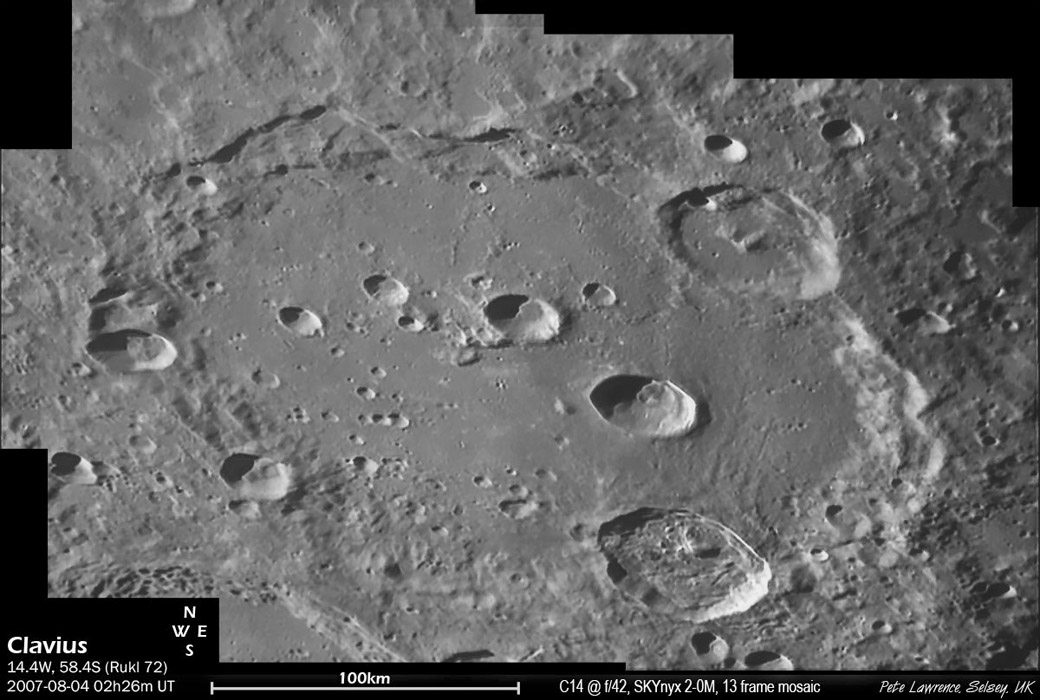
image by Pete Lawrence, Selsey, England.
Many highland craters have flat floors that must have been emplaced by some material that flowed to produce the apparent smoothness. The standard interpretation is that this floor-smoothing stuff is ejecta from the formation of the Orientale and perhaps the Imbrium basins. Lunar scientists are willing to accept that light-hued smooth plains like these in Clavius are volcanic if there are dark halo craters. Such little impact crarters excavate down through a surficial dusting of bright ejecta to an underlying dark mare basalt. There are no dark halo craters in the southern highlands and so none of this smooth stuff is volcanic. A more accurate statement is that none is volcanic material with a composition - and darkness - like mare basalts. But it could be volcanic with a different compositon. This is speculation, for now, but is there any evidence that the smooth stuff didnt come from basins? Look closely at the floor of Clavius and notice that some areas are smoother and have fewer crater pits than others. There is such a broad region across the center of the floor, both south and north of the peaks. Even with lower Sun angles and higher resolution these areas have fewer impact craters (but are still peppered with small ones). Similarly, Pete’s image shows old craters around Clavius whose floors are very smooth - see at center-top of image. There are similar ponds visible just to the northeast and northwest of Clavius. All of these have fewer impact craters than the surrounding terrain, and most of Clavius’ floor too. The fact that many isolated older craters have younger smooth filling does suggest aerial delivery, rather than many faults providing conduits for volcanic magmas to rise. But if this is basin debris it is surprising that it is not plastered everywhere - for example, on the older parts of Clavius’ floor.
Related links:
Pete’s spectacular web site
Yesterday's LPOD: Bright Stuff
Tomorrow's LPOD: Yardangs
COMMENTS?
Register, Log in, and join in the comments.



